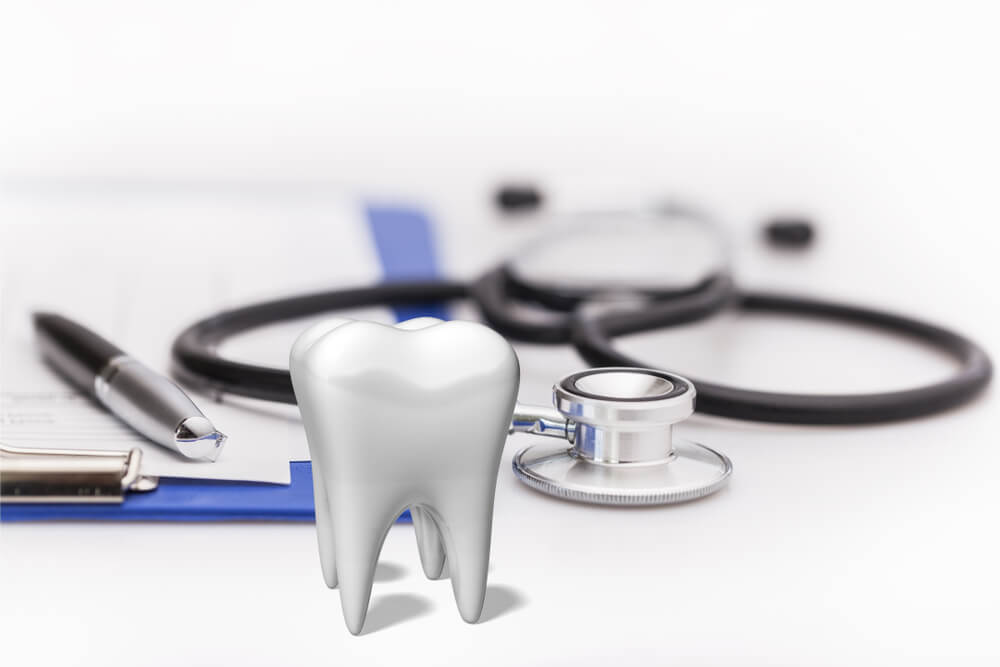
7 Top Dental PPC Errors You Can Easily Avoid or Fix
Dental professionals need a solid marketing strategy to reach potential clients. Dental clinics and practitioners can increase online visibility and attract patients with pay-per-click (PPC) marketing.
PPC lets them target demographics and locations to better reach their customers. Dental practices can optimize their marketing budgets by tracking their ROI with PPC.
PPC for dentists requires learning from the mistakes below:
 Forgetting to implement geo-targeting in dental PPC could lead to irrelevant clicks and unnecessary expenditures. A lack of geographical specifications might result in PPC ads attracting clicks from individuals who cannot utilize the services from their location, thus reducing your advertising ROI.
Clinics can focus their dental PPC efforts on specific regions where potential patients are, ensuring that ads are seen by individuals likely to convert, optimizing budgets, and improving the overall efficiency of PPC campaigns. Remember these top techniques to apply geo-targeting to dental PPC:
Forgetting to implement geo-targeting in dental PPC could lead to irrelevant clicks and unnecessary expenditures. A lack of geographical specifications might result in PPC ads attracting clicks from individuals who cannot utilize the services from their location, thus reducing your advertising ROI.
Clinics can focus their dental PPC efforts on specific regions where potential patients are, ensuring that ads are seen by individuals likely to convert, optimizing budgets, and improving the overall efficiency of PPC campaigns. Remember these top techniques to apply geo-targeting to dental PPC:
 Ignoring landing page optimization in dental PPC could lead to poor user experience, high bounce rates, and low conversion rates. Without a well-optimized landing page, visitors might struggle to find the information that they need or have trouble navigating the site. Consequently, visitors might abandon the page without taking any action.
By focusing on landing page optimization, dentists can provide visitors with a seamless and engaging experience that encourages them to convert. This ultimately maximizes the effectiveness of PPC campaigns. Remember the following tips for landing page optimization:
Ignoring landing page optimization in dental PPC could lead to poor user experience, high bounce rates, and low conversion rates. Without a well-optimized landing page, visitors might struggle to find the information that they need or have trouble navigating the site. Consequently, visitors might abandon the page without taking any action.
By focusing on landing page optimization, dentists can provide visitors with a seamless and engaging experience that encourages them to convert. This ultimately maximizes the effectiveness of PPC campaigns. Remember the following tips for landing page optimization:
 Failing to monitor and adjust dental PPC campaigns may lead to missed opportunities for optimization and improved performance. Without regular analysis of key performance indicators, marketers might overlook crucial insights that enhance targeting and messaging, resulting in suboptimal campaign outcomes.
Actively monitoring and adjusting campaigns based on performance data helps marketers make informed decisions that maximize their advertising investment and improve the effectiveness of PPC initiatives. Here are techniques to improve dental PPC monitoring and management:
Failing to monitor and adjust dental PPC campaigns may lead to missed opportunities for optimization and improved performance. Without regular analysis of key performance indicators, marketers might overlook crucial insights that enhance targeting and messaging, resulting in suboptimal campaign outcomes.
Actively monitoring and adjusting campaigns based on performance data helps marketers make informed decisions that maximize their advertising investment and improve the effectiveness of PPC initiatives. Here are techniques to improve dental PPC monitoring and management:
- Ignoring negative keywords.
- Lack of geo-targeting.
- Ineffective ad copy.
- Ignoring landing page optimization.
- Neglecting mobile optimization.
- Failure to monitor or adjust campaigns.
- Disregarding conversion tracking.
If you want to learn how Digital Authority Partners can increase your PPC effectiveness, watch this video!
1. Ignoring Negative Keywords
Neglecting to incorporate negative keywords in dental PPC campaigns can result in irrelevant clicks and wasted ad spending. Without proper filtering, the ads might appear for search terms unrelated to dental services. This leads to clicks from users seeking information or services that the clinic does not provide. Regularly updating and refining the negative keyword list can make sure that ads are displayed to a more targeted audience actively seeking dental services. Negative keywords also help maximize budgets and improve the effectiveness of PPC campaigns. Consider these strategies for negative keywords in dental PPC campaigns:- Monitor keyword performance and identify search terms irrelevant to dental services.
- Conduct thorough keyword research to identify potential negative keywords that trigger irrelevant clicks.
- Utilize keyword planner tools and PPC platforms to identify and add negative keywords that can refine targeting.
- Analyze search term reports to identify irrelevant search queries triggering ads and add these to the negative keyword list.
- Review competitors’ keywords and incorporate negative terms that they might be missing to improve the clinic’s targeting accuracy.
- Adjust match types to ensure that irrelevant variations of the targeted keywords do not trigger ads, reducing the chances of attracting irrelevant clicks.
2. Forgetting Geo-Targeting
 Forgetting to implement geo-targeting in dental PPC could lead to irrelevant clicks and unnecessary expenditures. A lack of geographical specifications might result in PPC ads attracting clicks from individuals who cannot utilize the services from their location, thus reducing your advertising ROI.
Clinics can focus their dental PPC efforts on specific regions where potential patients are, ensuring that ads are seen by individuals likely to convert, optimizing budgets, and improving the overall efficiency of PPC campaigns. Remember these top techniques to apply geo-targeting to dental PPC:
Forgetting to implement geo-targeting in dental PPC could lead to irrelevant clicks and unnecessary expenditures. A lack of geographical specifications might result in PPC ads attracting clicks from individuals who cannot utilize the services from their location, thus reducing your advertising ROI.
Clinics can focus their dental PPC efforts on specific regions where potential patients are, ensuring that ads are seen by individuals likely to convert, optimizing budgets, and improving the overall efficiency of PPC campaigns. Remember these top techniques to apply geo-targeting to dental PPC:
- Define the specific geographical areas where dental services are available and focus PPC campaigns on those regions.
- Use location extensions in ads to showcase the dental practice’s physical location and make it easier for local patients to find and contact the clinic.
- Analyze location-based data to understand where patients are coming from and adjust your geo-targeting accordingly to reach similar demographics.
- Utilize demographic data to refine geo-targeting and tailor ads to the specific characteristics and preferences of the target audience in different locations.
- Create ad copy that resonates with local audiences by incorporating region-specific language and mentioning nearby landmarks or community events.
3. Having Ineffective Ad Copy
Ineffective ad copy leads to low click-through rates and reduced conversions, as it fails to properly communicate the unique benefits of dental services. Poorly crafted ad copy also results in a lack of differentiation from competitors, making it challenging for potential patients to understand why they should choose your clinic or practice. With compelling, concise, and informative ad copy that highlights the value of dental services and addresses patient concerns, clinics can capture the attention of their target audience and encourage them to choose their dental practice over others. Consider these top strategies to avoid ineffective ad copy for dental PPC marketing:- Emphasize the unique features and benefits of dental services such as advanced technology, personalized care, or specialized treatments to differentiate the practice from competitors.
- Use clear and persuasive calls to action (CTAs) that encourage potential patients to take action such as scheduling an appointment, calling for a consultation, or learning more about specific services.
- Address common dental concerns and patient pain points in the ad copy, demonstrating how the services alleviate these issues and improve their overall well-being.
- Highlight patient testimonials or success stories in the ad copy to build trust and credibility.
- Highlight any relevant accreditations, certifications, or the expertise of your dental team to establish the practice as a trustworthy and reputable authority in dentistry.
- Use relevant keywords in the ad copy that align with the clinic’s services and the specific dental needs of the target audience. This ensures that ads reach the right patients actively seeking the clinic’s expertise.
4. Ignoring Landing Page Optimization
 Ignoring landing page optimization in dental PPC could lead to poor user experience, high bounce rates, and low conversion rates. Without a well-optimized landing page, visitors might struggle to find the information that they need or have trouble navigating the site. Consequently, visitors might abandon the page without taking any action.
By focusing on landing page optimization, dentists can provide visitors with a seamless and engaging experience that encourages them to convert. This ultimately maximizes the effectiveness of PPC campaigns. Remember the following tips for landing page optimization:
Ignoring landing page optimization in dental PPC could lead to poor user experience, high bounce rates, and low conversion rates. Without a well-optimized landing page, visitors might struggle to find the information that they need or have trouble navigating the site. Consequently, visitors might abandon the page without taking any action.
By focusing on landing page optimization, dentists can provide visitors with a seamless and engaging experience that encourages them to convert. This ultimately maximizes the effectiveness of PPC campaigns. Remember the following tips for landing page optimization:
- Simplify the navigation to make it easy for visitors to find the information they seek such as services, contact details, and appointment scheduling.
- Incorporate clear and compelling CTAs that prompt visitors to take the desired actions such as booking an appointment, contacting the practice, or learning more about specific dental treatments.
- Make certain that the landing page loads quickly across all devices, as a slow-loading page leads to increased bounce rates and hinders the user experience.
- Provide informative and engaging content that addresses common dental concerns, highlights the dentist’s expertise, and educates visitors about the importance of oral health and hygiene.
- Conduct A/B testing on different elements of the landing page. Test page elements such as layout, design, and content to identify what resonates best with the audience.
5. Neglecting Mobile Optimization
Neglecting mobile optimization leads to a significant loss of potential patients, since many internet users access information through mobile devices. Without a mobile-friendly interface, users could encounter difficulties navigating the site, leading to frustration and a higher bounce rate. Prioritizing mobile optimization makes sure of a seamless browsing experience for mobile users, effectively engaging a broader audience and increasing conversions. Mobile PPC ad optimization involves various strategies. Here are some of the most effective ones:- Implement a responsive design that automatically adjusts the layout and content of the landing page to ensure a seamless and user-friendly experience across various mobile devices and screen sizes.
- Optimize content for mobile viewing by using concise and easily readable text, clear images, and legible fonts to enhance overall readability and accessibility.
- Make sure that phone numbers are clickable, enabling users to quickly initiate calls to the dental practice directly from their mobile devices. This facilitates convenient communication and potential appointment scheduling.
- Optimize for quick loading times on mobile devices, as slow loading speeds lead to user frustration and increased bounce rates, negatively impacting the PPC campaign’s performance.
- Ensure that all interactive elements, such as buttons and forms, are easy to tap and navigate on touchscreens, providing a user-friendly experience that encourages visitors to engage with the content.
- Leverage location-based optimization to target mobile users in specific geographical areas to tailor PPC campaigns to local audiences and attract nearby patients to your dental practice.
6. Failing to Monitor and Adjust Campaigns
 Failing to monitor and adjust dental PPC campaigns may lead to missed opportunities for optimization and improved performance. Without regular analysis of key performance indicators, marketers might overlook crucial insights that enhance targeting and messaging, resulting in suboptimal campaign outcomes.
Actively monitoring and adjusting campaigns based on performance data helps marketers make informed decisions that maximize their advertising investment and improve the effectiveness of PPC initiatives. Here are techniques to improve dental PPC monitoring and management:
Failing to monitor and adjust dental PPC campaigns may lead to missed opportunities for optimization and improved performance. Without regular analysis of key performance indicators, marketers might overlook crucial insights that enhance targeting and messaging, resulting in suboptimal campaign outcomes.
Actively monitoring and adjusting campaigns based on performance data helps marketers make informed decisions that maximize their advertising investment and improve the effectiveness of PPC initiatives. Here are techniques to improve dental PPC monitoring and management:
- Conduct regular performance analysis to assess key metrics such as click-through rates, conversion rates, and cost per acquisition and identify areas for improvement.
- Monitor the performance of targeted keywords, identifying high-performing keywords that drive conversions and eliminating underperforming keywords that consume the budget without yielding results.
- Adjust budget allocation based on the performance of different campaigns and ad groups.
- Monitor and analyze competitors’ PPC strategies to identify new opportunities, stay ahead of industry trends, adjust campaigns accordingly, and maintain a competitive edge.
- Implement effective conversion tracking to measure the impact of PPC campaigns on patient acquisition and retention.
7. Disregarding Conversion Tracking
Disregarding conversion tracking in dental PPC can hinder a dental clinic’s ability to measure the success and effectiveness of its advertising efforts. Without clear insights into which ads and keywords are driving patient conversions, it becomes challenging to effectively allocate budgets and optimize campaigns for better results. Through conversion tracking, marketers gain valuable data on the performance of PPC initiatives, making data-driven decisions that improve overall ROI and drive more patients to the dental practice. Remember these top conversion tracking tips for dental PPC:- Define specific conversion goals such as appointment bookings, form submissions, or phone inquiries to track the effectiveness of PPC campaigns in driving tangible results.
- Install conversion tracking pixels on your landing pages to monitor and measure the actions taken by visitors, enabling you to track and attribute conversions to specific ads or keywords within your PPC campaigns.
- Utilize conversion tracking tools provided by PPC platforms, such as Google Ads and Bing Ads, to gain insights into the performance of campaigns.
- Monitor conversion funnels on the website to identify potential areas for improvement and optimize the user journey for a seamless and frictionless experience.
- Integrate PPC campaigns with customer relationship management (CRM) systems to track and analyze the patient’s lifecycle. These tools allow marketers to evaluate the effectiveness of PPC efforts in acquiring and retaining patients.
Summing Up
Avoid or fix these PPC errors to optimize paid ad targeting and avoid wasting ad budgets. Dentists and dental offices can achieve their PPC goals and reach their target audience with effective PPC campaigns. Find out how expert PPC for dentists can change your overall paid ad strategy. Contact Digital Authority Partners (DAP) for the latest digital marketing strategies today.Want To Meet Our Expert Team?
Book a meeting directly here



